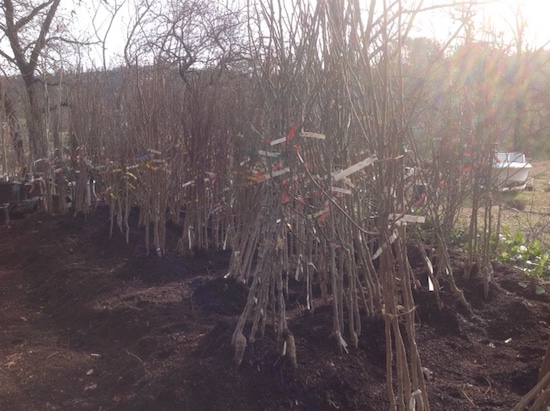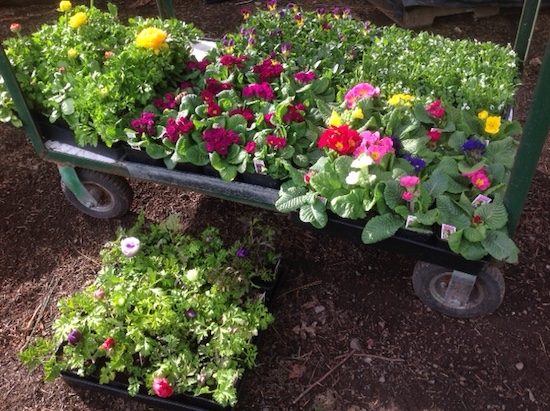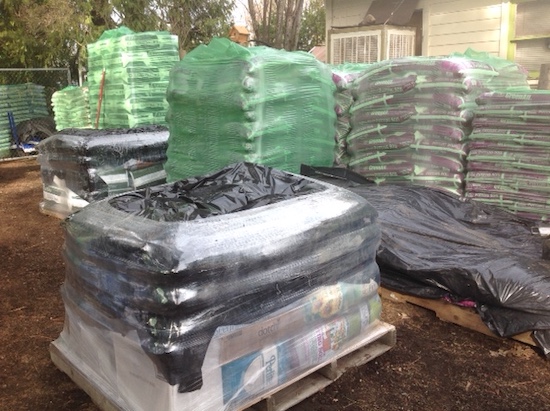February Newsletter

A few updates, Weeks Roses are in stock, here is our 2020 rose list. We have re-stocked the seed racks and stocked up on all soils. Bare-root trees are here, and you can find the link to our tree selection at Dave Wilson. We have a fresh selection of pottery from Pacific Home and Garden and have reordered the beautiful and colorful Spanish pots we had last year. Fairy garden figures have been reordered with some new choices, along with old favorites. We are getting a new liquid fertilizer called AgriThrive that I was excited about at the show. Our plugs are on order, and Eric is in the process of recovering the greenhouse, so we will have our custom baskets again this year along with a few ‘perennials’ we grow ourselves. Seed potatoes are here, onion bulbs will be in next month, and we have some cool-season veggie starts available now. All your favorite staff will be back and eager to help with your gardening questions.

We have been going over our suppliers cost to us for plant material and find it necessary to raise the price on annuals and perennials. We believe our prices are competitive with other retail nurseries, but we will never be able to sell as cheap as the box stores or local home improvement stores. The horticultural industry, except for cannabis, has always been undervalued as is the knowledge of the people working in the industry. We have been reticent to raise prices too often, although overhead costs like labor, utilities, insurance, and goods sold have been increasing annually.

So what should you be doing in the yard and garden this month? Here’s an outline of the talk I was planning on giving at the Hidden Valley Garden Club but had to turn over to another as our bare root trees came the same day.
Winter in the Garden
Pruning:
- Fruit trees: remove dead and crossing growth. Cut last year’s growth to the desired height.
- Stone fruit flowers in a new place every year. Pome fruit (apples and pears) produce on fruiting spurs for several years. Hint: look for the clusters of buds.
- Re-wrap or re-paint the trunks of young trees.
- Young shade trees- Now is the time to shape while still small
- Note: Every leaf produces energy for the tree, so you do not want to thin too much. It can weaken a tree and also open it up for sunburn in the summer.
- Shrubs: Thin and prune to shape. Note: only cut Hydrangeas back two buds, not hard and spring-blooming shrubs are done after they bloom
- Roses: try to remove as many of the leaves as possible to give the plant a rest and because they are disease magnets this time of year. Remove old canes to the ground if you have 4-6 younger strong canes to keep. Cut to an outwards growing leaf scar/bud break. Hint: the mark that looks like an upside-down smile.
Dormant Spraying:
- OMRI approved Horticultural oil: used to smother overwintering insect eggs
- Fungicides: OMRI approved copper or sulfur used to kill overwintering diseases on roses, fruit trees and shrubs. These include peach leaf curl, fire blight, rust, black and brown spot, and powdery mildew.
- Note: Apply using directions on the bottle for dormant spraying which is stronger than during growing season and before a minimum of 36 hrs with no rain. If you have had an insect infestation or a disease issue this spraying is highly recommended and to do more than once.
Bare-Root Season:
- Now is the time to buy deciduous fruit and shade trees for the best selection and price. These are trees that are dormant, field grown and shipped minus any soil. These are available only in the winter. Once they start to leaf out they need to be planted.
- Also available: berries, grapes, hops, gojis, kiwis, lilacs, etc.
Perennials:
- Continue dividing overgrown clumps or moving plants that were not happy in their spot like too much sun or too much shade. (Bearded iris best to do in fall)
Planting:
- Get any spring-blooming bulbs in by the end of January. Spread wildflower seed.
- Cold hardy annuals, perennials, vegetables, and shrubs can be planted. Annuals include pansies, poppies, ornamental cabbage, sweet peas, primrose, snapdragons, calendula and veggies like kale, broccoli, cabbage, cauliflower
Fertilizing:
- Continue treating hydrangeas with True Blue (if you want blue flowers).
- Top dress trees, roses, and shrubs with manure or other organic material. Top dress containers to keep the soil level up.
- Check pots to make sure they are draining.
- Feed stawberries, asparagus and artichokes.
Weeding and clean up:
- Weeds are best dealt with when young. Some non toxic hints follow:
- 4-6 inch layer of mulch or a layer of cardboard with mulch covering
- Strong vinegar/salt/dish soap spray on a warmer sunny day
- Good old fashioned hoeing
- Weed torch on pavement or gravel or if nothing flammable like old leaves and dry weeds around.
Growing from seed:
- February is the month to start slower growing plants from seed indoors to put out
after danger of frost reduced. Tomatoes, peppers, eggplant, perennial herbs and flowers to start. - March for marigolds, zinnias, cosmos, squash, melons, basil and cukes.
Prepare annual beds:
- Amend your vegetable and flower beds with organic matter and get them ready for spring planting.
And here we thought this was the time of year when there was nothing to do out in the yard. Spring will be here before we know it and the more you do this winter preparing the more you will be able to enjoy the nice weather without stressing about all the things you could have done this winter.

February Specials
- 20% off Camellias
- 25% off Oregon Grown Conifers
- 50% off Fall Bulbs while they last
- $1.00 off Jumbo 6 packs pansies and violas
- $1.00 off jumbo 6 packs Snapdragons